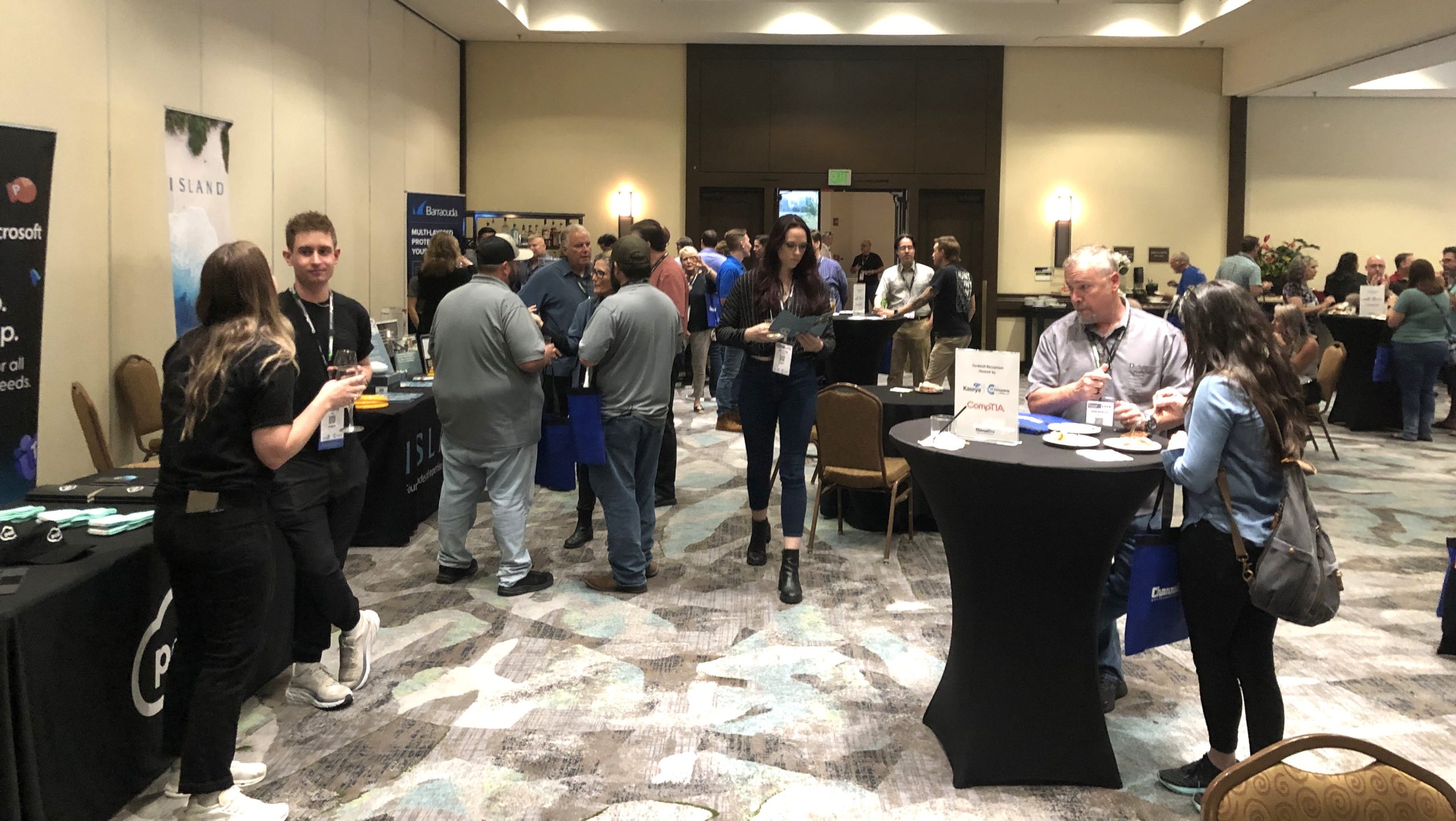Having the proper certifications means better employment opportunities and better partnerships with vendors. This certification series, courtesy of Kaplan’s Transcender IT Certification Success, will test your knowledge of various certification exams, including an in-depth tutorial explaining each answer. The tutorial also includes further reading and relevant information.
In our second exam, we’ll be testing your knowledge of Interconnecting Cisco Networking Devices, which is part of the Cisco CCNA certification.
Interested in other IT certifications? Transcender offers practice exams on many certifications, ranging from CompTIA to CISSP. For a limited time, ChannelPro-SMB.com readers get an exclusive discount to these practice exams. Use offer code CPSMB10P for 10 percent off of any practice exam. Offer excludes CD and Voucher purchase options. This offer code expires on December 1, 2011.
The Cisco Certified Network Associate (CCNA) Certification is a testing program that certifies the skills of computer professionals responsible for supporting local-area and wide-area routed networks and local-area switched networks using Cisco software and hardware solutions. NetCert: Interconnecting Cisco Networking Devices Part 1 practice test is designed to prepare you to pass the ICND1 (640-822) exam given by Cisco. The ICND1 exam measures your ability to properly support routed and switched LANs and routed WANs.
†By first reviewing the suggested materials and then practicing with NetCert: Interconnecting Cisco Networking Devices Part 1, you should be fully prepared to pass the actual exam given by Cisco. The ICND1 exam is the first exam in the two-exam path to achieve the CCNA certification.
Review the Interconnecting Cisco Network Devices Part 1 exam (ICND1 640-822) information page at http://www.cisco.com/web/learning/le3/current_exams/640-822.html. This site contains the authoritative list of information about the ICND1 exam and includes a link to other available references.
CiscoÆ, Cisco SystemsÆ, CCDA, CCNA, CCDP, CCNP, CCIE, CCSI, and the Cisco Systems logo and the CCIE logo are trademarks or registered trademarks of Cisco Systems, Inc. in the United States and certain other countries. All other trademarks belong to their respective owners.
Which Cisco IOS Cisco Discovery Protocol (CDP) command displays the IP address of the directly connected Cisco devices?
a.) show cdp
b.) show cdp devices
c.) show cdp traffic
d.) show cdp neighbors detail
Which of the following fields are in a Transmission Control Protocol (TCP) packet? (Choose three.)
a.) Length
b.) Sequence Number
c.) Data Offset
d.) Type-of-Service
e.) Window
Which statement is NOT true regarding Internet Control Message Protocol (ICMP)?
a.) ICMP can identify network problems.
b.) ICMP is documented in RFC 792.
c.) ICMP provides reliable transmission of data in an Internet Protocol (IP) environment.
d.) An ICMP echo-request message is generated by the ping command.
Which cable can suffer attenuation if it is bent beyond the minimum bend radius?
a.) UTP
b.) STP
c.) Co-axial
d.) Fiber optic
Which of the following splits the network into separate broadcast domains?
a.) bridges
b.) VLANs
c.) switches
d.) hubs
Which Cisco IOS Cisco Discovery Protocol (CDP) command displays the IP address of the directly connected Cisco devices?
a.) show cdp
b.) show cdp devices
c.) show cdp traffic
d.) show cdp neighbors detail
Answer:
d.) show cdp neighbors detail
The show cdp neighbors detail command displays the IP address of the directly connected Cisco devices. CDP is a Layer 2 (data link layer) protocol that finds information about neighboring network devices. CDP does not use network layer protocols to transmit information because it operates at the data link layer. An example of the output of the show cdp neighbors detail is as follows:
Tecumsah#show cdp neighbors detail
————————-
Device ID: Tacoma
Entry address(es):
IP address: 172.19.169.88
Platform: cisco 7206VXR, Capabilities: Router
Interface: Ethernet0, Port ID (outgoing port): FastEthernet0/0/0
Holdtime : 123 sec
Version :
Cisco Internetwork Operating System Software
IOS ™ 5800 Software (C5800-P4-M), Version 12.1(2)
Copyright (c) 1986-2002 by Cisco Systems, Inc.
advertisement version: 2
Duplex: half
————————-
Device ID: Topeka
Entry address(es):
IP address: 172.19.169.100
Platform: cisco AS5300, Capabilities: Router
<>
The show cdp devices command is incorrect because this is not a valid Cisco IOS command.
The show cdpcommand is incorrect because this command is used to view the global CDP information. It lists the default update and holdtime timers, as in the following sample output:
Atlanta# show cdp
Global CDP information:
Sending CDP packets every 60 seconds
Sending a holdtime value of 180 seconds
Sending CDPv2 advertisements is enabled
The show cdp traffic command is incorrect because this command displays traffic information between network devices collected by the CDP, as in the following example:
Birmingham# show cdp traffic
Total packets output: 652, Input: 214
Hdr syntax: 0, Chksum error: 0, Encaps failed: 0
No memory: 0, Invalid: 0, Fragmented: 0
CDP version 1 advertisements output: 269, Input: 50
CDP version 2 advertisements output: 360, Input: 25
Reference:
CCENT/CCNA ICND1 Official Exam Certification Guide, Chapter 10: Ethernet Switch Troubleshooting, Verifying the Network Topology with Cisco Discovery Protocol, pp. 277-282.
Protocolbase.net > Protocols > CDP (Cisco Discovery Protocol)
Which of the following fields are in a Transmission Control Protocol (TCP) packet? (Choose three.)
a.) Length
b.) Sequence Number
c.) Data Offset
d.) Type-of-Service
e.) Window
Answer:
b.) Sequence Number
c.) Data Offset
e.) Window
Sequence Number, Data Offset, and Window are the fields found in a TCP packet. The TCP hosts create a connection-oriented session with one another. The following are the fields found in a TCP packet:
- Sequence Number: Refers to the first byte of data in the current message. This field helps TCP to reassemble the packets in the correct order. For example, when data is transferred between an FTP server and FTP client, the receiver uses this field to reassemble the packets into the original file.
- Data Offset: Refers to the number of 32-bit words in the TCP header.
- Window: Refers to the size of the available space for the incoming data.
- Source Port and Destination Port: Refer to the point where upper-layer source and destination processes receive TCP services. Both TCP and UDP packets contain these fields.
- Acknowledgment Number: Refers to the sequence number of the next byte of data which the sender will receive.
- Reserved: Reserved for future use.
- Flags: Contains control information, such as the SYN and ACK bits which are used to establish and acknowledge communication, and the FIN bit which is used to terminate the connection.
- Checksum: An indicator of any damage to the header while being in transit. Both TCP and UDP packets contain this field.
- Urgent Pointer: Refers to the first urgent data byte in the packet.
- Options: Used to specify TCP options. Only TCP packets contain this field.
- Data: Has upper-layer information.
The Length field is incorrect because this field is found in a User Datagram Protocol (UDP) packet, where it specifies the length of the UDP header and data. UDP headers contain the Source Port, Destination Port, Length, and Checksum fields.
The Type-of-Service field is incorrect because this field is found in an Internet Protocol (IP) packet, where it specifies the handling of a current datagram by an upper-layer protocol.
Reference:
CCENT/CCNA ICND1 Official Exam Certification Guide, Chapter 6: Fundamentals of TCP/IP Transport, Applications, and Security, Figure 6-10: TCP and UDP Headers, p. 146.
Which statement is NOT true regarding Internet Control Message Protocol (ICMP)?
a.) ICMP can identify network problems.
b.) ICMP is documented in RFC 792.
c.) ICMP provides reliable transmission of data in an Internet Protocol (IP) environment.
d.) An ICMP echo-request message is generated by the ping command.
Answer:
c.) ICMP provides reliable transmission of data in an Internet Protocol (IP) environment.
ICMP does NOT provide reliable transmission of data in an Internet Protocol (IP) environment. The Transmission Control Protocol (TCP) is used to provide reliable transmission of data in an IP environment.
The following statements are TRUE regarding ICMP:
- ICMP can identify network problems.
- ICMP is documented in RFC 792.
- An ICMP echo-request message is generated by the ping command.
- An ICMP echo-reply message is an indicator that the destination node is reachable.
- ICMP is a network-layer protocol that uses message packets for error reporting and informational messages.
Reference:
Which cable can suffer attenuation if it is bent beyond the minimum bend radius?
a.) UTP
b.) STP
c.) Co-axial
d.) Fiber optic
Answer:
d.) Fiber optic
Fiber-optic cables can suffer attenuation if they are bent beyond the minimum bend radius. Fiber-optic cables work on the principle of total internal reflection. The fiber optic cable uses a laser and glass tubes with refractive internal coating to achieve total internal reflection. If a light ray travelling in the tube is bent at a certain angle, the light ray will be reflected inside the medium instead of passing through the medium. If the fiber optic cables are bent beyond the minimum bend radius, the signal will be lost and the cable will suffer attenuation. Fiber cables are expensive and are typically used for outdoor campus backbone. However, as the fiber cables use light to carry signals, they are not affected by the electro-magnetic interference (EMI) generated by electric cables.
All other cables typically use copper to carry low voltage signals and are not affected by normal bending. However, even copper cables may suffer some signal loss if there are bends in the cable.
Reference:
Cisco > Articles > Network Technology > General Networking > Fiber-Optic Technologies
Which of the following splits the network into separate broadcast domains?
a.) bridges
b.) VLANs
c.) switches
d.) hubs
Answer:
b.) VLANs
Virtual LANs (VLANs) split the network into separate broadcast domains, as would a router. VLANs are a software implementation embedded in a switch’s software that allows the switch’s hardware to switch packets only to ports that belong to the same VLAN.
Neither a switch nor a bridge splits the network into separate broadcast domains. Both a switch and a bridge are used to create collision domains for each connected node. Collision domains confine traffic destined to or coming from a particular host to the switch port of that node in the switch. This reduces collisions, which in turn decreases retransmissions and elevates throughput. Switches work at Layer 2 in the OSI model and perform the function of separating collision domains. Neither switches nor bridges filter broadcasts and distribute them across all ports.
A hub does not split the network into separate broadcast domains. A hub regenerates signal when it passes through its ports, which means that it acts as a repeater and port concentrator only. Hubs provide a common connection point for network devices, and connect different network segments. Hubs are generally used for LAN segmentation. Hubs work at Layer 1 of the OSI model, which is the physical layer. Hubs do not filter broadcasts or create collision domains.
Reference:
Cisco Documentation > Internetworking Case Studies > LAN Switching








